
Everywhere you go, as long as it is the countryside, you will see the standard wind powered turbines with long blades. They have long been a symbol of beauty and power, giving farms and communities...
We take stuff like faucets for granted and we tend not to think about how well designed they could be. Probably because most are so boring. Well, the Swirl faucet isn’t boring at all.
The Swirl Faucet features a system of tiny turbines that causes water to come out in a swirling lattice consisting of many jets of water. It looks awesome. Using this faucet would be fun since those jets are beautiful to look at. However this design goes beyond just aesthetics. The swirling function is also designed to reduce water consumption by 15%.
Sadly we can’t buy it yet since it is a design concept by London-based designer Simin Qiu. Maybe one day soon though.


[via Laughing Squid]
There are already portable battery packs that have solar panels for recharging. The Trinity is a new kind of portable charger that uses a different renewable source of energy: the wind. It recharges its 15,000 mAh battery through its built-in wind turbine. Although it’s quite promising, I don’t think you should support it just yet.
Trinity weighs just 4lb. and when collapsed it’s just 12″ long, so it’s fairly portable. It has three aluminum legs that can either stay in a tripod arrangement or lie flat. Inside Trinity is a 15W generator and its battery. The current prototype has a 5V/1A USB charging port, although inventor Skajaquoda is considering adding an additional 5v/2A USB port for more power hungry devices like tablets. Here’s where it starts to get iffy. Skajaquoda also added a miniUSB port that’s meant to charge Trinity’s battery… via an outlet.
Why would they add a way to charge the battery that doesn’t use the built-in wind turbine? If you’re going to plug it in to charge it you might as well get a conventional battery pack that’s much smaller. The only reason I can think of for the addition of the mini-USB charging option is that Skajaquoda isn’t confident about Trinity’s charging speed through the wind turbine. Commenters on the fundraising site are asking the same question: How fast does it charge through wind power? Sadly, Skajaquoda didn’t include that vital data on their Kickstarter page and on their pitch video.
Breeze on over to Kickstarter to find out more about Trinity. The device can be yours for a pledge of at least $249 (USD), but again I don’t think you should back the project yet. I’m not saying this is vaporware or a scam. It’s an interesting and promising invention, but at the same time there are important details about it that need to come to light before you plunk down your hard-earned cash.
[via GadgeTell]
If you’ve been following Technabob for any period of time, you know we’re big fans of Tokyoflash and their unusual watches. Now, here’s a Tokyoflash watch that is kind of a big fan itself. That is, it’s based on the fan blades of a turbofan engine.

The new Kisai Blade watch gets its inspiration from the blades of a turbine fan engine. When off, the face of the watch really does look like a jet engine. It’s got a stepped, smoked lens which conceals an array of LEDs arranged around a central point. The watch is based on a concept design originally submitted by Peter Fletcher to the Tokyoflash design blog.

When illuminated, the LEDs can tell time in one of two modes – one which works like traditional watch hands – and another which rapidly flashes the time by indicating each digit based on the angle of each hand. It’s also got a nifty animation mode which should be perfect for all of those raves I know you’ve been attending. If you want to see it in action, check out the demo video below:
The Blade is rechargeable via USB, and you can go about a month between charges. It’s available in black, gold, silver, or silver with a leather band, and in several different LED color choices. I think the all black with the red hands is my favorite.


If you head on over to Tokyoflash right away, you’ll be able to get in on the launch price of just $139(USD)- good until Thursday, August 29th at 11:00am Japan time.

Larry Page just picked up another bird for his flying craft collection, and this plane doesn't even carry passengers. In fact, it's not used for transportation at all -- the aircraft is tethered to the ground. Google X, the tech giant's experimental arm, recently acquired the device's designer, Makani Power. That company is currently in the process of creating a flying wind turbine system.
In essence, the Airborne Wind Turbine (AWT) flies at an altitude of 800 to 1,950 feet in order to take advantage of stronger winds. On-board generators create up to 600 kilowatts of electricity collected through dedicated turbines, which is then sent on to a tethered ground station. It's an interesting idea indeed, and judging by Google's non-disclosed financial interest, Mountain View sees some serious potential as well. The acquisition, first reported by Bloomberg Businessweek, was but one component of the publication's in-depth look into Google X. You can read that article in full at the source link below.
Via: The Verge
Source: Makani Power, Bloomberg Businessweek
Have you ever wanted to fly with a jet pack? Well it may still be a long time before solo jet flight is an everyday mode of transportation, but if the guys behind the Jet Vest have their way, man’s quest for individual flight will be just that much more likely. And if you’ve got the money, you might even get a chance to fly one.

Inspired by the original Bell Rocket Belt seen in movies like James Bond’s Thunderball, Dieter Sturm and Jeff Seymour of Jet Machines Extreme have been working on what they’ve coined “the next generation of personal flight.”

The team is currently building a wearable jet pack that’s powered by a pair of micro jet turbine engines – different from the dangerous hydrogen peroxide rocket engines found on other jet packs. Their goal is to build a pack that can carry up to 400 pounds, providing free flight of up to 4 minutes at a time. In addition, they expect that their jet technology will carry a passenger for as little as $20 per flight, versus a fuel cost of $1200 to $1400 for rocket-powered packs.
So far, they’ve been working on functional engines and a prototype version of the Jet Vest, but have exhausted their personal resources to get the first phase of development and engineering complete. They’re now raising funds over on Kickstarter to complete the second phase of development of their Jet Vest, to bring the vest to fruition.
While you can contribute as little as $10 to help fund the project, while those who pledge $500 or more will get access to behind-the-scenes videos of the testing of the pack, $2500 puts you on the crew for a test flight and $5000 or more actually lets you fly the Jet Vest (on a tether).
What you see above isn't a whole lot to go off of in terms of details, but it's still a bit significant for tablet fans regardless. The image, which displays a page hiding deep within Verizon's internal system, offers the first confirmation of the ZTE V66 tablet's destiny: it shall ride onto Big Red's LTE network as the Verizon Turbine 7.0. We guess the latter name is the catchier of the two. Few other details are known at this point -- hence, the incredibly bare product page -- but the tablet was originally rumored to sport a 7-inch (1,280 x 800) display, a 1.2GHz dual-core processor, 1GB of RAM and a 4,000mAh battery. We'd venture to guess that an OS jump to ICS or Jelly Bean should be in the works as well, unless Verizon wants its brand new slate to be dead in the water before it even launches.
[Thanks, Anonymous]
Filed under: Tablets, Wireless
Verizon Turbine 7.0 in the works, likely to be ZTE V66 tablet originally appeared on Engadget on Tue, 28 Aug 2012 11:33:00 EDT. Please see our terms for use of feeds.
Permalink | | Email this | CommentsAs my airplane circled over Amsterdam, one of the most notable aspects of the landscape below was the number of modernized windmills dotting the fields. So when I came across the Harmowind project, it got me thinking, why can’t we adapt to this free source of energy and become self-reliant? This particular windmill has been specifically designed for household use and can be installed in the backyard. It has the capacity to generate enough power for a single-family unit to use.
As the designer explains, “Unlike the horizontal axis wind turbines, Harmowind is independent of wind direction. It can make use of wind turbulence to generate power, which happens very often in built-up area. Harmowind runs extreme quietly thanks to not only the vertical axis, but also the small rotation radius.”
Designer: Hailan Li
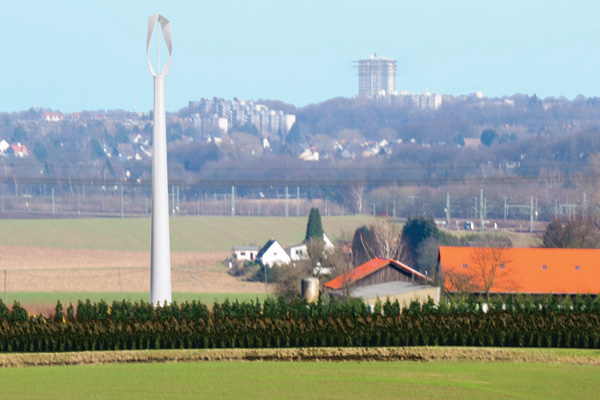
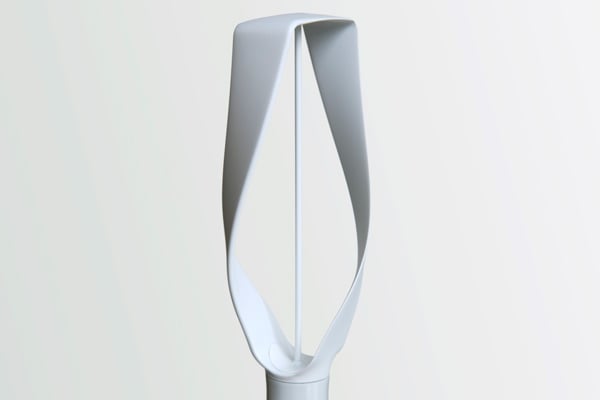
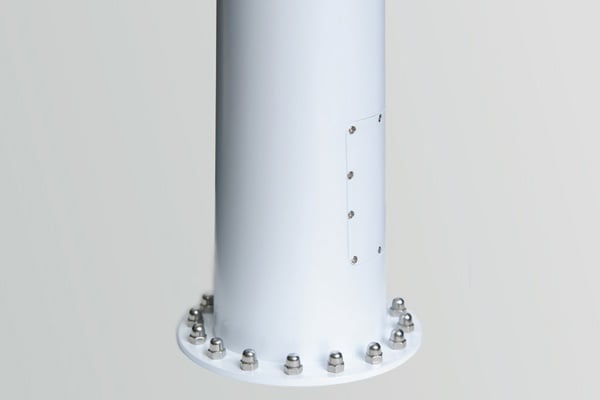
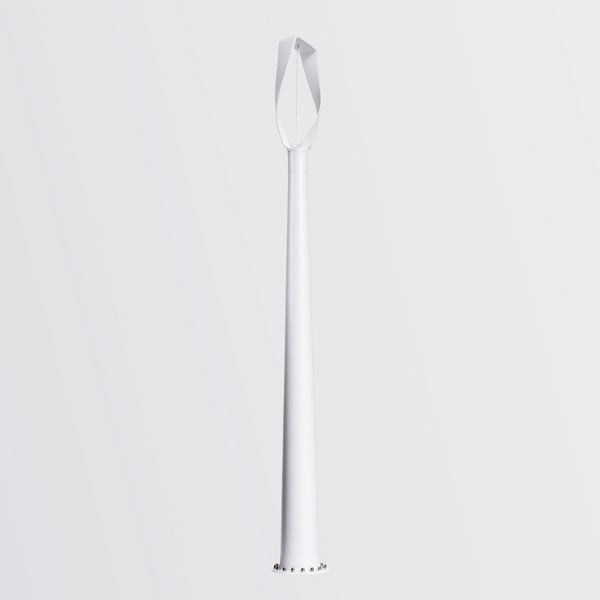
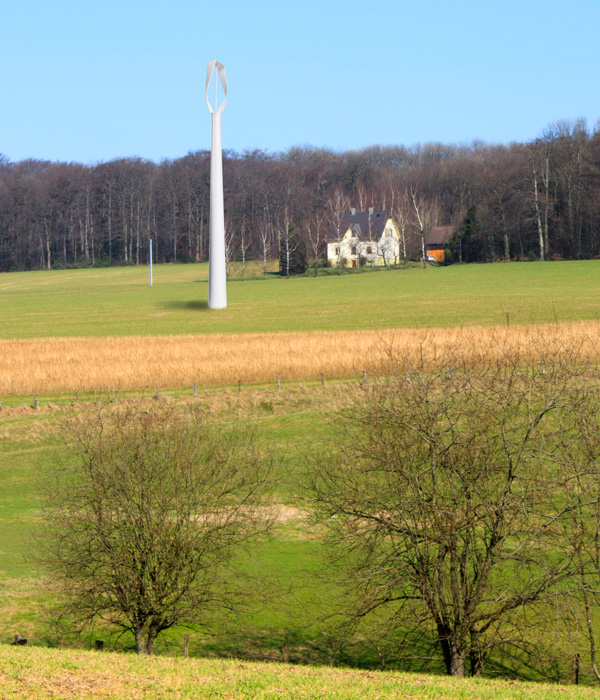
-
Yanko Design
Timeless Designs - Explore wonderful concepts from around the world!
Yanko Design Store - We are about more than just concepts. See what's hot at the YD Store!
(Backyard Wind Energy was originally posted on Yanko Design)
Related posts:
The Turbine Bridge concept is a hydroelectric power station that also serves as a multifunctional space on Amsterdam’s Amstel River. On the main internal level there is space dedicated to pedestrian walkers and cyclists, cafes and stores while the upper level hosts terraces, playgrounds and spaces to relax. More than just a link between two sides of the river, the bridge aims to become a landmark where both locals and tourists can come together.
Designer: DWAWU Architects
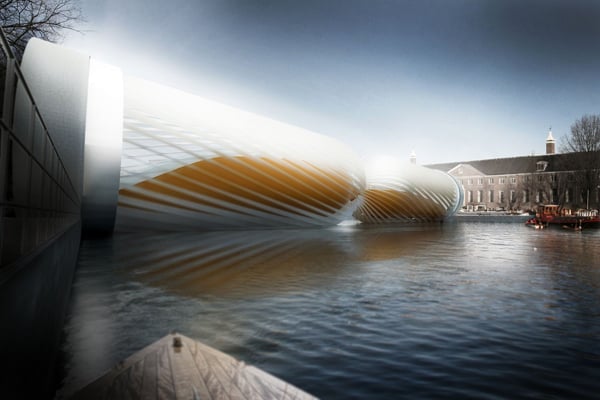





-
Yanko Design
Timeless Designs - Explore wonderful concepts from around the world!
Yanko Design Store - We are about more than just concepts. See what's hot at the YD Store!
(Living Architecture was originally posted on Yanko Design)
Related posts:
Who said the butterfly effect couldn't apply to renewable energy? Though wind farms are considered pretty green on the energy-generating spectrum, it looks like they, too, have an impact on the planet. According to a study published today in the journal Nature Climate Change, turbines can raise the local temperature -- albeit slightly. From 2003 to 2011, researchers monitored satellite data for west-central Texas, which is home to 2,350-plus turbines and four of the world's largest wind farms. In that decade, scientists observed a temperature increase of 0.72 degrees in wind farm regions compared to areas without turbines. That warming trend was especially marked at night, when the temperature difference between the ground and the air is highest. The temperature increase was also higher in winter; researchers say that these cooler, windier conditions cause turbines to generate more electricity and therefore create more heat. Since the study didn't find any change in daytime temperatures, it looks like we don't have to ring the global warming alarm just yet.
Study says wind turbines raise surrounding area temperature, but only at night originally appeared on Engadget on Mon, 30 Apr 2012 14:47:00 EDT. Please see our terms for use of feeds.
Permalink Phys.Org | | Email this | Comments
Phys.Org | | Email this | Comments